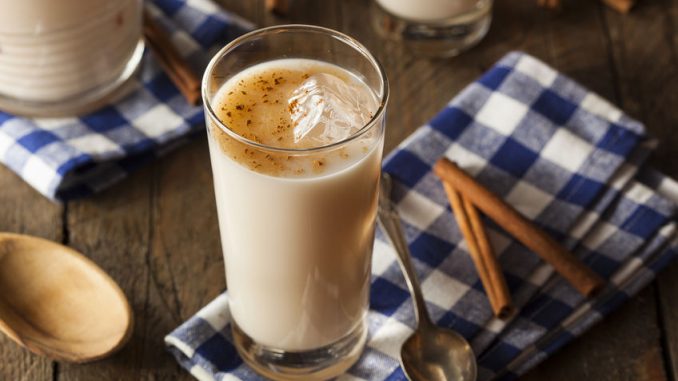
For UK and US customers, Horchata is not a drink they will be that familiar with. It is however part of the culture for Valencians in Southern Spain and they have reputedly been consuming it for over 800 years. The beverage will always be associated with Tiger Nuts or chufas as it is colloquially known. It is quite a complex beverage because it can be made from a variety of other nuts such as ground almonds, sesame seeds, rice, and barley.
Tiger nuts incidentally are also known as yellow nut sedge, chufa sedge, nut grass, and tiger nut sedge. They are in fact small tubers and have the scientific name (Cyperus esculentus L.).
Tiger nuts were said to form up to 80% of the diet of ancient peoples living in and around North Africa and Southern Europe.
The name comes from Northern Spain especially the Catalan region where it is known as orxata and is a derivative of the word ordi or barley. Horchata however is said to have developed as a beverage in Valencia where the cultivation of tigernuts appeared during the Islamic governance of the region from the 8th to the 13th Centuries. Tiger nuts were grown like chickpeas in North Africa and various parts of the Mediterranean.
Tiger nut milk (TNM) is a nonalcoholic low-acid beverage. This milk has always been popular because it has a naturally sweet taste characterised by a slight nut-like flavour but also with a solid nutritional value. The milk contains protein (3.28 to 7.32%), fat (2.4 to 3.1%), carbohydrates such as sucrose (9 to 10%), and starch (2 to 3%) (Codina-Torella et al., 2015).
The Tiger Nuts are normally cold-pressed using the same equipment as for olives to produce a rice like liquid which is considered extremely healthy. The health qualities of tiger nuts come from a balanced macronutrient profile containing various minerals – iron, calcium, potassium and various healthy fats. It is similar in content to meat. It also has a reasonable fibre content which could serve as a prebiotic and thus support healthy gut bacteria, flora and fauna and this help with digestion.
The product quality is supervised by a regulatory council in the Valencia region to monitor quality and define the region where it is made with a Denomination Of Origin. Horchata is also prevalent throughout South America where many variants occur. In some cases it is made only with rice. It is usually served very cold, with ice generally and as an alternative to milk for those with lactose intolerance.
Products Involving Horchata
Organic Gemini from Brooklyn, N.Y. USA have a range of Tigernut based horchata drinks in various flavours. They offer seven varieties including the original, unsweetened, coffee, honey, chai, strawberry and banana.
References
Codina-Torrella, I., Guamis, B., & Trujillo, A. J. (2015). Characterization and comparison of tiger nuts (Cyperus esculentus L.) from different geographical origin: Physico-chemical characteristics and protein fractionation. Industrial Crops and Products, 65, pp. 406-414.
Codina-Torrella, I., Guamis, B., Ferragut, V., & Trujillo, A. J. (2017). Potential application of ultra-high pressure homogenization in the physico-chemical stabilization of tiger nuts’ milk beverage. Innovative Food Science & Emerging Technologies, 40, pp. 42-51.
El-Naggar, E. A. (2016). Physicochemical characteristics of Tiger nut tuber (Cyperus esculentus Lam) oil. Middle East Journal of Applied Sciences, 6(4), pp. 1003-1011.
Ezeh, O., Gordon, M. H., & Niranjan, K. (2014). Tiger nut oil (Cyperus esculentus L.): A review of its composition and physico‐chemical properties. European journal of lipid science and Technology, 116(7), pp. 783-794.
Roselló-Soto, E., Garcia, C., Fessard, A., Barba, F. J., Munekata, P. E., Lorenzo, J. M., & Remize, F. (2018). Nutritional and microbiological quality of tiger nut tubers (Cyperus esculentus), derived plant-based and lactic fermented beverages. Fermentation, 5(1), 3. .
I love this drink and have it all the time in Arizona. Lets have more of this as it is right up my alley. I actually have a whole conversation about horchata this past weekend.
I made cilantro horchata for a cilantro-themed iron chef party a while back and it was good (adapted from bayless as well!), but the best I’ve had was the first – when I vacationed in good old Spain a couple of years ago. de-light-ful!
We need more street carts in Pasadena!